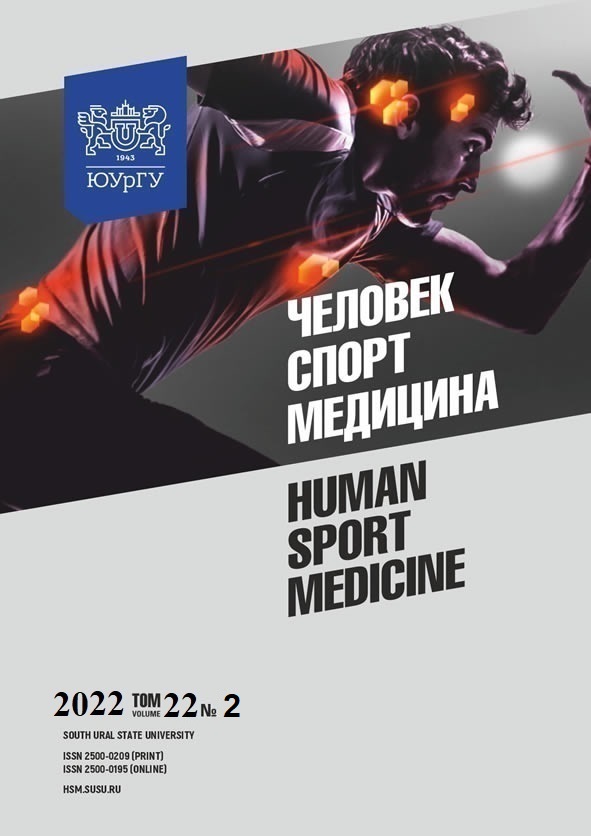BIOELECTRICAL ACTIVITY OF MUSCLES IN TRAINED WEIGHTLIFTERS DURING THE SNATCH
Abstract
The aim of the study was to examine the bioelectrical activity of muscles in elite weightlifters and identify its correlation with muscle performance during the snatch. Materials and methods. The study involved 35 male weightlifters of the Russian national team (Master of Sport, International Class Master of Sport). Bioelectrical activity of muscles (trapezius muscle, vastus lateralis muscle, biceps femoris, gastrocnemius muscle) was recorded with surface electromyography (sEMG). Results. The results obtained show that effort change between the phases of the snatch is associated with explosive contractions in the acceleration phase, the unsupported squat phase and the stabilization phase, and relatively small muscle tension in the pull phase and the supported squat phase. Conclusion. The bioelectrical activity of muscles was recorded and analyzed in terms of muscle performance during the snatch. The sEMG data obtained during the snatch indicate the timely activation and relaxation of motor units, which contributes to intra-and intermuscular coordination and optimal muscle performance.
References
References on translit
Copyright (c) 2022 Human. Sport. Medicine

This work is licensed under a Creative Commons Attribution-NonCommercial-NoDerivatives 4.0 International License.















